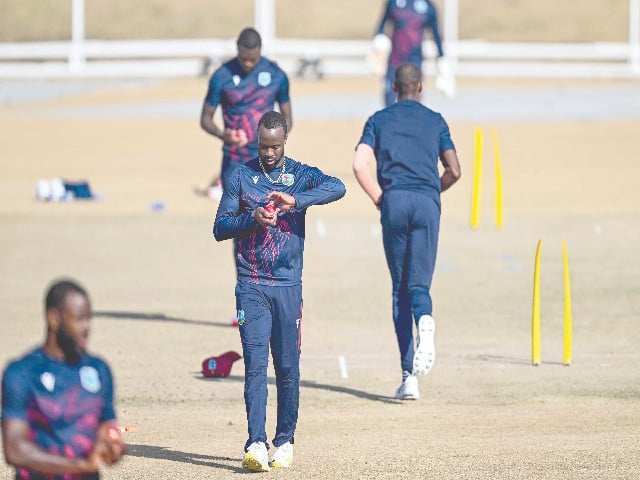Hazare carried hopes of a nation just beginning its Test journey

Save Log in , register or subscribe to save articles for later. Save articles for later Add articles to your saved list and come back to them any time. Got it Normal text size Larger text size Very large text size India’s first cricket summer in Australia, 1947-48, was long, hot and damp. Bad weather dogged the tourists. They were ambushed on wet wickets at the Gabba and the Melbourne Cricket Ground and washed out of the Test at the Sydney Cricket Ground between times. But the greatest deluge was runs, which poured from Bradman’s bat in abundance: over summer he took the tourists for a total of 1081 runs at an average of 135.12, his eight hundreds for the season an Australian record. One of these, for the Australian XI, was his 100th in first-class cricket; his single innings in Brisbane was then more than India eked from both all-out totals. There was a sense of Bradman mortaring his 20 years of statistical bricks. Hundreds in both innings of a Test match, Irving Rosenwater noted, was the “one honour that had thus far eluded Don Bradman in his phenomenal Test career”. He ushered in the new year at Melbourne by filling that gap with a chanceless 132 in 197 minutes and 127 not out in 178 minutes, in the process also passing 6000 Test runs and 25,000 first-class runs. Keith Miller and Sir Donald Bradman shake hands after Bradman made his 100th hundred against India. To this stage, the Indians had registered little with the Australian public, and in some ways it was remarkable they had arrived at all, with the Punjab in the process of being bloodily divided during their preparations for departure. Partition cost India the future services of the pace bowler Fazal Mahmood and opening batter Hanif Mohammad, destined to excel for Pakistan. Vijay Merchant, Mushtaq Ali and Rusi Modi were also, for various reasons, not selected, and the team that went found turf pitches difficult to assimilate after long careers on matting. In Vinoo Mankad and Dattu Phadkar, they had tireless all-rounders, but their captain, Lala Amarnath, and their other batting star, Gul Mohammad, had no impact on the Tests despite scoring freely against the states. Then there was Hazare, at 32 years of age the so-called “Bradman of India”, albeit in a lower key and at a slower tempo. Members of the Indian cricket team arrive in Sydney In November 1947. Vijay Hazare is in the centre of the group wearing a hat. Credit: Unknown When first they met, in the interstate match, Hazare peeled off 95 and Bradman 156. Bradman was “very impressed by the soundness . . . and the correctness of his stroke production”, noting only that Hazare’s lack of aggression “prevented him taking advantage of an attack and tearing it to pieces”. Ironically, Hazare in defending his routine circumspection was wont to invoke Bradman. On his first visit to England as part of a Rajputana side in 1938, he had watched Bradman at Trent Bridge and Lord’s play with great deliberation, ignoring the catcalls and the critics alike. “He and other Australians several times drew away from the wicket when loud booing started as the Australian batsmen faced a bowler,” Hazare recalled. “He just shelved all the attacking strokes and contented himself with playing out time.”AdvertisementDonald Bradman, third from right in front row, led the Australian XI that played against India in Brisbane in 1947. If he had but known it, Bradman had already another impact on Hazare’s career, by being party to Clarrie Grimmett’s exclusion from that Australian team – one of history’s most controversial omissions, described by Bill O’Reilly as a “dereliction of selection responsibilities” that left him “heartbroken”. Rather than languish at home, Grimmett had accepted a lucrative invitation to coach in India from the Rajah of Jath, and in doing so made the acquaintance of the studious Hazare, shortly to break every record during the wartime Quadrangulars and Pentangulars. Hazare became the most devoted of disciples and never forgot the debt he owed his “guru”, writing to Grimmett during his highly successful Indian tour of England in 1946: “Let me note here that this little success of mine in the cricket sphere is entirely due to your valuable instructions which I will never forget, at least in this life. I will also be thankful to you if you will in future, as in the past, kindly help me by giving necessary instructions.” Hazare’s guru, Clarrie Grimmett. The relationship between players and their coaches in India is, and remains, uniquely deferential. Sachin Tendulkar’s mentor, Ramakant Achrekar, is shortly to be the subject of a biopic; Virat Kohli gave his instructor, Rajkumar Sharma, a car. But the relationship between Hazare and Grimmett remains particularly fascinating for its transnational nature and its ardency. Grimmett championed Hazare: he let everyone know how good the young man was, quite openly barracked for him, which didn’t always make life easy. Hazare was earnest, stoical, never happier than when oiling his bat, applying lime to his pads or polishing his boots. The back cover of his autobiography, Cricket Replayed, features neither blurb nor action photo, but a simple nostrum: “A true cricketer submits to fate without complaint.” But he approached the Test in Grimmett’s home city of Adelaide with a tincture of dread: “I had another worry. My cricketing GURU, Clarrie Grimmett, was all the while singing my praises and told them of my doings at home.” Hazare hitting a boundary in Britain in 1952. Credit: Fox PhotosAdvertisementHazare had first to survive two days in the field, prolonged by Amarnath dropping Bradman at slip on 2, which in five hours he inflated to 201. Hazare finally bowled Bradman with one of his pawky seamers, as he had in Sydney, but India went into the sabbath rest day on 2-6, chasing 674. They were 5-133 before Hazare was able to rally resistance, finding a sound partner in the all-rounder Dattu Phadkar, and the 105-degree day drew the sting from Australia’s attack. Hazare reached three figures 10 minutes from stumps, his eventual 116 taking four and a half hours, and the sixth wicket raising 188. India’s innings of 381 had both failed to reach to follow-on and to satisfy Hazare. “He [Grimmett] was watching me throughout the Test,” he recalled. “I had the uncomfortable feeling of a schoolboy appearing for a practical examination before stern examiners. I had to vindicate my GURU.” When Bradman threw India straight back in, the opportunity was quickly upon him, Mankad and Amarnath falling in the first over. But Hazare saw off those other stern examiners, Ray Lindwall and Keith Miller, by standing up to them, hooking consecutive bouncers from the latter to the fence. When Bradman would not give him another leg-side catcher, in fact, Miller refused to bowl anything other than off-breaks. Hazare took advantage and reached his second hundred in the last over of the fourth day with an on-drive to the fence off Sid Barnes. He was last out for 145 in 313 minutes as Australia completed another innings victory. Hazare in 1941. Credit: Fairfax Media For some, summer was all a bit too pitiless. “Bradman has played this series of Tests in a very austere fashion,” wrote Victor Richardson in Kolkata’s Illustrated News, “and the Indian team has been given no quarter or privilege of any kind and has battled against a team eager to win by as big a margin as possible on every occasion.” But Hazare had no complaints: after the match he was gifted a gold cigarette case by India’s high commissioner which he carried the rest of his life – empty, he being a non-smoker. Nor did his guru. Dining with his disciple after the Test at Dundula, in suburban Firle, Grimmett glowed with satisfaction. “Vijay,” he said, “I am a very proud man today.” In light of his achievements, Hazare was excused India’s next fixture, in Mildura against Victorian Country. But it was in that unlikely setting that the Indians learned the stunning news of the loss of their own national guru. On the way to a late-afternoon prayer meeting in Delhi, Mahatma Gandhi had been shot by a Hindu extremist, Nathuram Godse. The cricket team’s manager, Pankaj Gupta, described it as a “national catastrophe” and reported his players as grief stricken: “We have been stunned. None of us could get any sleep last night. We just sat around sadly listening to the All-India radio. Some of us wept at the news.” It is hard to see Hazare as one of these. His devotions were Catholicism and cricket; as Vijay Merchant put it: “Net practice was a matter of religion to him.” All the same, the team were so shaken that there was thought of calling off the tour. In the event, the Fifth Test in Melbourne was preluded by a minute’s silence for the Mahatma – perhaps the first time that the death of a non-British leader had been so honoured in Australia. “The Indian players seemed to lose heart in the final game,” thought Bradman – perhaps it is no wonder. Hazare with fans in Britain in 1952. Bradman himself had by then clarified his own future. The night before the Test, he had announced his availability for the forthcoming tour of England. “I have today advised my co-selectors that I am available for the Australian tour of England,” he told journalists, reading from a statement. “At the same time I wish to say that the game against India will be my last first-class match in Australia, as I shall retire from cricket at the conclusion of the English tour.” Invincibility beckoned.Advertisement












